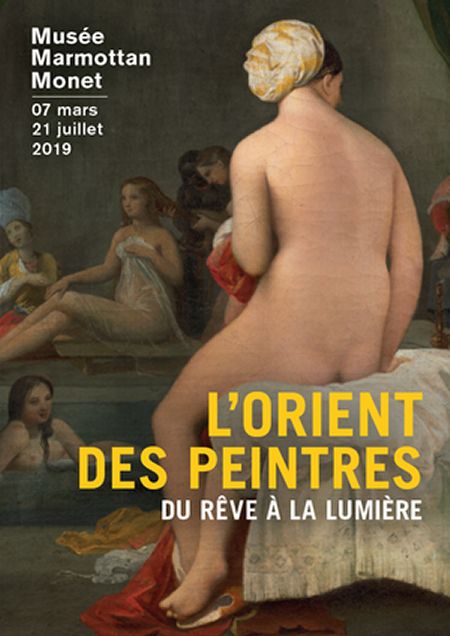THE ORIENT OF THE PAINTERS OF THE DREAM AT THE LIGHT MUSEUM MAMOTTAN PARIS |
|
"The color has me. There is no need to seize it. She owns me, I know it. That's the meaning of the happy moment: the color and I are one. I am a painter. ", Notes Paul Klee in his diary during the trip to Kairouan in April 1914. |
|
| The Marmottan Monet museum presents L'Orient des peintres, in a beautiful exhibition from March 7 to July 21, 2019. It is in the mansion house that houses the collections of Paul Marmottan, dedicated to Napoleon and his family that are exhibited works inspired by the breath of Napoleonic conquests that push many European painters to fantasize the East before actually go there.
From the sensuality of harem women to arid landscapes, this passion for the Orient brings out the power of color, which emancipates itself, and sees the emergence of abstraction. And it is above all a renewal of the spectrum of colors that these travels will bring: in the face of the dazzling light of the Orient and unknown natural spectacles, painters invent new ways of painting. At the beginning of the exhibition "Orient des Peintres", we find Ingres and Delacroix gone to the East, Ingres immortalizing the Grande Odalisque (editor's note: harem's wife), Delacroix and Chassériau bringing a more real but no less classical vision of the countries . Then from Gérôme and Landelle to Vallotton, without forgetting Migonney, Bernard, Matisse or even Paul Klee, the exhibition Orient des Peintres reveals to us how during a visit the Orient fantasized turned into an initiatory journey for painters Europeans who come back transformed and then offer unpublished works. There are also two paths, that of the human figure and that of the landscape with Ingres's "The Little Bather" (1828, Paris, Louvre Museum) and "Innenarchitektur" (Interior Architecture, 1914, Wuppertal, Von der Heydt Museum). ) by Paul Klee. These two lines enlighten each other throughout the journey increasingly carried by a real knowledge of the East but always nourished tradition and fantasy. "We must look at this people at the distance where it is convenient for them to show themselves: men at close quarters, women from afar; the bedroom and the mosque, never "as Eugène Fromentin notes in his book" A Summer in the Sahara " . In her painting "Moorish woman leaving the bath", 1854, Chassériau uses an iconography borrowed from mythology and the classical tradition. The figure of harem, new Venus, can not indeed be portrayed in a faithful way, because it remains invisible to all. Thus Édouard Debat-Ponsan in "The Massage: scene of Hammam" (1883), renews a classic and imaginary iconography in staging it against a backdrop of Islamic mosaic. The human figure will eventually fade in the dazzling oriental light. From Jean-Léon Gérôme ("The Merchant of Colors" (The Pillar of Colors, circa 1890-1891) to Eugène Fromentin ("The Land of Thirst", circa 1869, Paris, Musée d'Orsay) and Hippolyte Lazerges (" Caravan near Biskra, Algeria ", 1892, Nantes, Museum of Arts) begins a transition from the figure to the landscape, by the presentation of genre scenes with a growing attention to light and structure ever more refined landscapes. The progressive geometrization of the landscape ends up concentrating on the composition and rhythm of the colors: Jules-Alexis Muenier rubs shoulders Pascal Dagnan-Bouveret, Albert Marquet and Camoin. The geometry and whiteness of the city of Algiers thus inspires Muenier "The Port of Algiers", (1888, Paris, Musée d'Orsay). Wassily Kandinsky or Paul Klee to cross the threshold of abstraction, linked to the experience of pure color and dazzle as such "Arab City" of Kandinsky, (1905, Paris, MNAM, Center Georges Pompidou) or "Oriental" (1909, Munich, Städtische Galerie im Lenbachhaus and Kunstbau) gradually moving into pure color. Orientalism then gives way to a radical experiment, at the origin of modern art. pure painting. |
|
| Joanne Courbet for DayNewsWorld | |
 |
|




